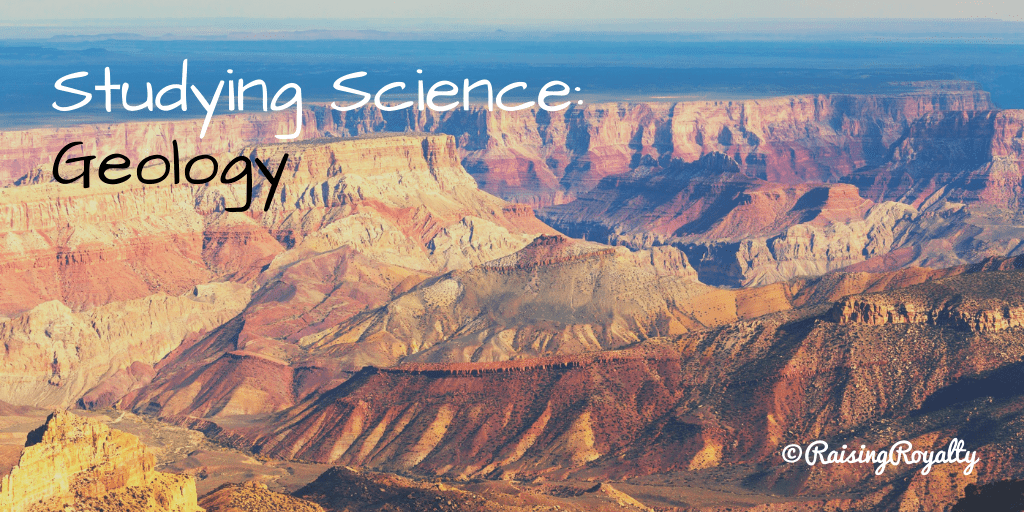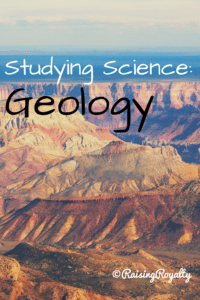
This post contains affiliate links. Please view our disclosure.
The earth sciences are a favorite science for elementary students. Kids love to collect rocks! And creating your own volcano is always a fun way to explore science! We do units about earthquakes and volcanoes, the layers of the earth and plate tectonics, the rock cycle and how rocks are classified, and of course about how fossils are made. Here’s the science resources we use in our homeschool earth sciences unit study.
Despite all our technology and expertise, we still can’t predict when an earthquake will strike or a volcano erupt. The awesome and terrifying nature of our own planet makes for some incredibly interesting science! And from the first days when we collect rocks, stare at the layers in hillsides and cliffs, and gaze in awe at mountains and canyons, learning about the past from the evidence in the earth has led some kids to lifelong careers.
The Earth Science resources:
Learning facts doesn’t have to be boring. Well-written non-fiction books for kids, historical accounts, and fictional stories easily develop scientific curiosity and skills in kids (and adults!). I’ve put together some amazing books on rocks, volcanoes, fossils, caves, and of course the earth itself!
Picture books:
Picture books, with colorful illustrations, simple, engaging stories and fun characters are perfect introductions to science concepts. From the rock cycle to the layers of the earth, start your science study with some of these favorites:
- The Earthquake on My Island by Pascale Coq
- Tummy Rumble Quake: An Earthquake Safety Book by Heather L Beal
- How Earthquakes Were Made by Trinity Leppert
- Going to the Volcano by Andy Stanton
- Earthquake by Ruskin Bond
- Vladimir the Volcano by Rana Boulos
- The Princess and the Warrior: A Tale of Two Volcanoes by Duncan Tonatiuh
- Hill of Fire by Thomas Lewis
Read-aloud or Chapter Books:
While there are lots of stories that feature adventures in the mountains or other landforms, stories that feature rocks, caves, or volcanoes are a bit harder to come by. However, here are a few read-aloud stories that centre around earth sciences.
- Earthquake Terror by Peg Kehret
- Fuzzy Mud by Louis Sachar
- A World Below by Wesley King
- The Terrible Tide by Suzanne Meade
- Volcano Adventure by Willard Price
- The Map That Changed the World: William Smith and the Birth of Modern Geology by Simon Winchester
- Folk Tales of Rock and Stone by Jenny Moon
- Head Full of Rocks!: Mostly True Tales of a Commercial Paleontologist by Seth Sorensen
- Krakatoa: The Day the World Exploded by Simon Winchester
- Every Hidden Thing by Kenneth Oppel
- The Skull in the Rock: How a Scientist, a Boy, and Google Earth Opened a New Window on Human Origins by Marc Aronson
For non-fiction & informative reading:
I love the non-fiction series for science from DK Eyewitness, and the “The Magic School Bus”. Kids love exploring weather science because it is so easy to see for themselves. And natural disasters look incredible — as long as they’re on TV or in a book. Share the incredible power of weather with your kids with some of these books!
- The Rock Factory by Jacqui Bailey
- The Magic School Bus Inside the Earth by Joanna Cole
- DK Eyewitness Books: Volcano and Earthquake by Susanna Van Rose
- Fault Lines: Understanding the Power of Earthquakes by Johanna Wagstaffe
- The Rock Hounding Bible: The Complete Guide to Find Identify and Collect Precious Gems Minerals Geodes Fossils & More by Michael Carlson
- Geology for Kids: A Junior Scientist’s Guide to Rocks, Minerals, and the Earth Beneath Our Feet by Meghan Vestal
- Gems for Kids: A Junior Scientist’s Guide to Mineral Crystals and Other Natural Treasures by Lee Hall
Multimedia options
Earthquakes and volcanoes around the world lend themselves to jaw-dropping video of the effects. It’s both horrifying and fascinating. And with cameras everywhere today, we have now been able to film these disasters in real time, as they happen.
Technology has also allowed people to take stunning videos of gorgeous landforms and rock formations. Now we can see some of geology’s best examples without having to visit for ourselves — and often much closer than we would be able to get in person anyway.
From the Japanese earthquake of 2011, to the volcanic eruption of Mt. St. Helen’s in the 1980’s, your kids can watch some of the biggest earth-shaking events… at a safe distance. And the incredible drone footage of Hawaii’s lava flows, the Grand Canyon, or flying over the Alps of Europe and Vesuvius in Italy, check out geology in action with them.
You can even get up close and personal on a dinosaur hunt with paleontologists, or deep in the mines with miners looking for gems and gold. The Earth Sciences are the science of treasure, so let’s go hunting!
Also, I highly recommend Crash Science for Kids: Earth Sciences, for a great, easy-to-understand series of videos on weather for kids.
Activities you can do:
These activity books, lapbooks and unit studies make awesome curriculum and lesson plans to help guide your learning:
- STEM Starters for Kids Geology Activity Book: Packed with Activities and Geology Facts
- Geology Lab for Kids: 52 Projects to Explore Rocks, Gems, Geodes, Crystals, Fossils, and Other Wonders of the Earth’s Surface
- The Earth Lapbook Study Guide – A Journey Through Learning
- Earthquakes Lapbook Study Guide – A Journey Through Learning
- Volcanoes Lapbook Study Guide – A Journey Through Learning
- Rocks and Minerals Lapbook Study Guide – A Journey Through Learning
- Rocks and Minerals Lapbook & Passages – Undercover Classroom
- Biomes Lapbook & Passages – Undercover Classroom
- Caves – STEM/STEAM Lapbook or Worksheets – Teaching to Soar
- Crystals – Earth’s Hidden Treasure – Lapbook – Teaching to Soar
And explore weather with these geology and rock kits:
Other Weather Resources:
Here are some interactive websites that will help you and your kids learn more about geology:
And go fossil hunting or rock climbing near you!
You may also like:
Egyptian History
Mesopotamian History
Chinese History
Aztec, Mayan & Incan History
Ancient Roman History
Space Science
Weather Science
DIY Summer Camp
What’s your favorite way to study science? Do you prefer to watch it, read about it, or get hands-on?

